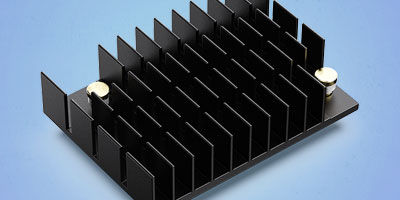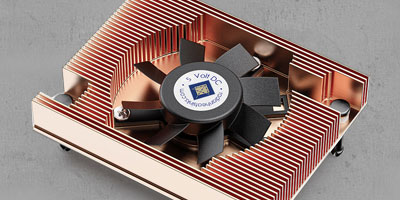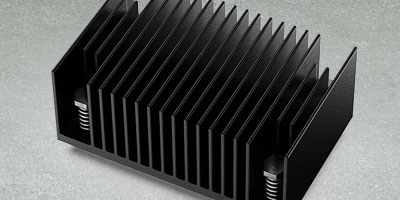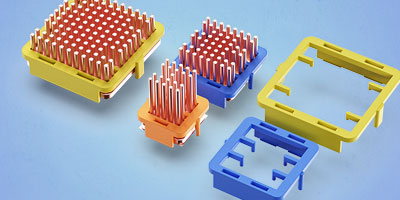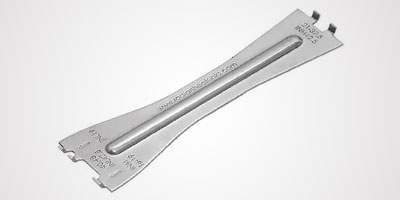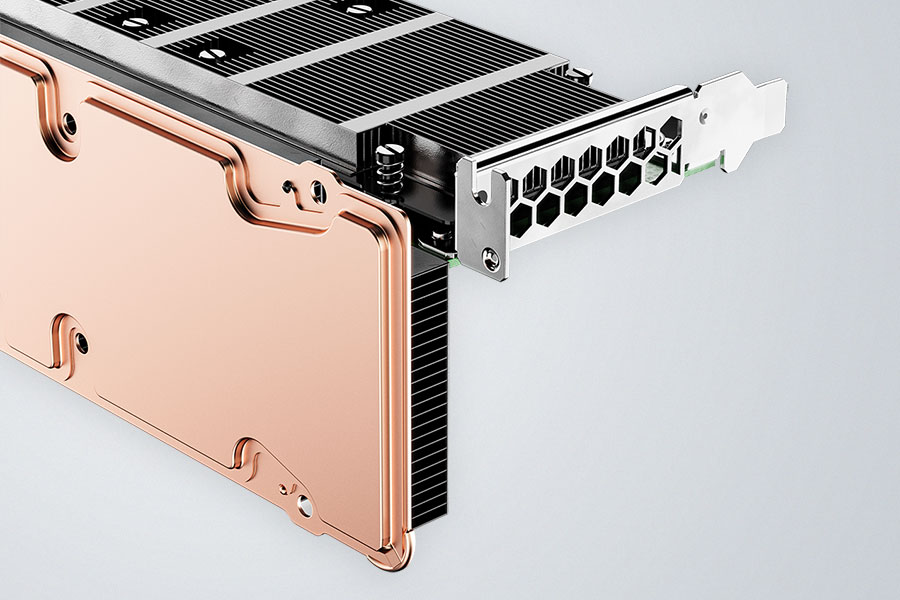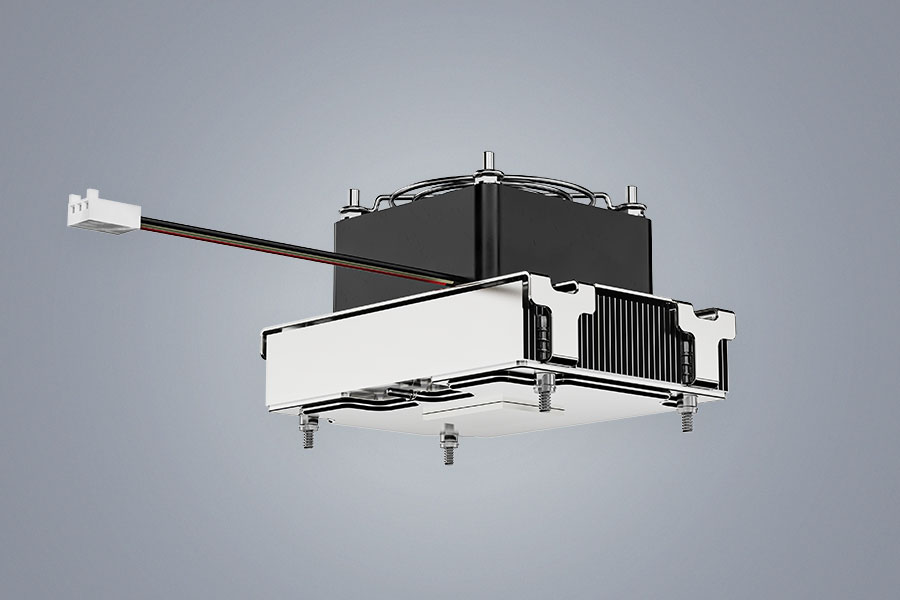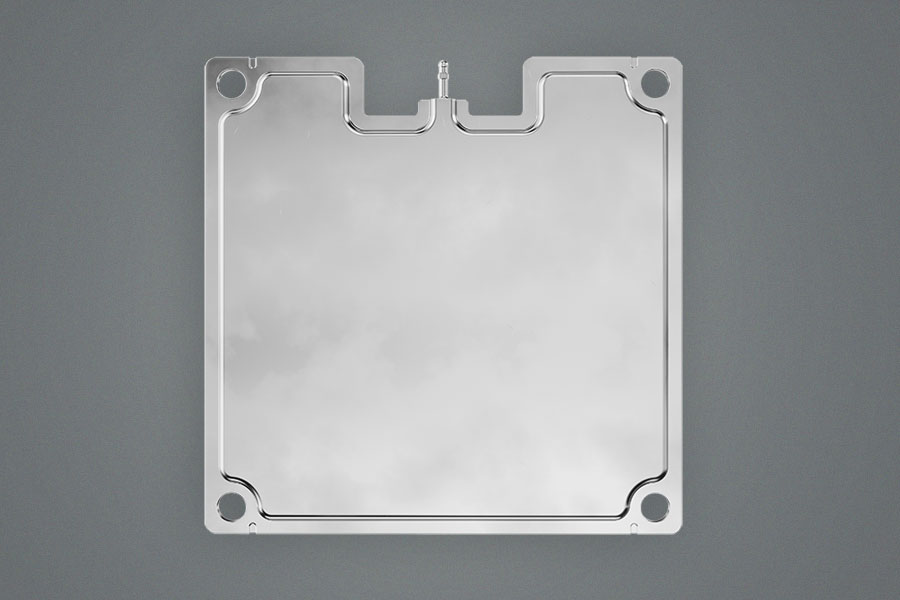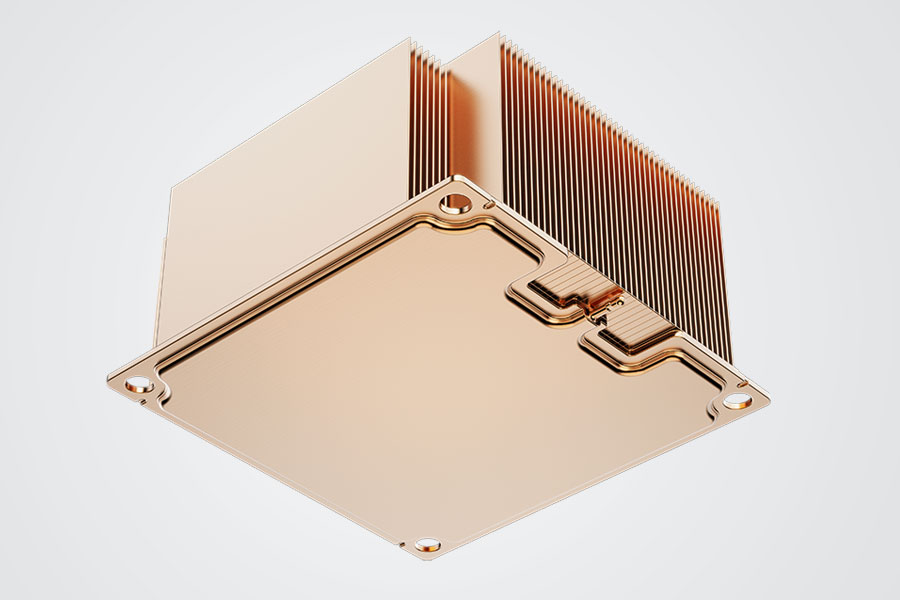Vapor chamber cooling is a highly efficient thermal management solution used in electronic devices and high-performance computers to dissipate heat generated by the components. It is a flat, sealed chamber filled with a small amount of liquid (de-ionized water) that evaporates when exposed to heat. The vaporized liquid then spreads out evenly across the chamber, transferring heat away from the source and towards the outer edges where it can be dissipated more effectively.
Vapor chamber cooling evenly distributes the heat across the entire chamber, allowing for more efficient cooling compared to traditional heat sinks or heat pipes. It is particularly useful in devices such as graphics cards and CPUs, where heat dissipation is crucial.
What Are Vapor Chambers?
Vapor chambers are flat, thin heat spreaders made of copper that contain a small amount of water or other liquid inside.
Vapor chamber cooling technology is becoming increasingly popular in electronic devices such as computers, gaming consoles, and smartphones. This cooling solution using evaporation and condensation offers an efficient process for managing heat dissipation.
How Do Vapor Chambers Work?
Unlike traditional heat sinks that rely on solid metal to conduct heat away from components, vapor chambers use a sealed chamber filled with a small amount of liquid that evaporates when heated.
When the device generates heat, the liquid (usually deionized water) inside the vapor chamber absorbs this heat and turns into vapor. The vapor then travels to the cooler end of the chamber, where it condenses back into liquid form and releases the heat. This process allows for efficient heat transfer and cooling of the device.
Vapor Chamber vs Traditional Heat Pipe
Vapor chamber cooling is more advanced and efficient compared to traditional heat pipes. Both vapor chambers and heat pipes are used to control heating devices. However, there are several key differences between the two.
Heat pipes consist of a sealed metal tube that is typically filled with water. When heat is applied to one end of the heat pipe, the liquid evaporates and travels to the cooler end, where it condenses back into liquid and releases heat. This process continues in a closed loop, effectively transferring heat away from the source.
On the other hand, vapor chambers are made up of multiple layers of metal with a wick structure inside. The wick is typically made of porous materials like copper or sintered powder that helps to evenly distribute the water across the surface of the chamber. When heat is applied to the vapor chamber, the liquid evaporates and vapor spreads out evenly across its surface, absorbing the heat in the process. This vaporization and distribution are more even compared to a heat pipe. Simply put, heat pipes help in moving heat away from the source in direction whereas vapor chambers allow for two-dimensional spreading of the heat.
Thermal Performance of Vapor Chambers: Factors Affecting Thermal Performance in Heatsinks
If you are interested in optimizing the thermal performance of vapor chambers, there are several factors to consider:
- Proper Design: the design of the vapor chamber plays a crucial role in its thermal performance. Ensuring that the wick structure is optimized for effective fluid movement and distribution, as well as selecting the appropriate working fluid for the application, can significantly improve heat transfer efficiency.
- Material Selection: choosing the right materials for the base plate and wick structure also impact thermal performance. Copper ,is commonly used in vapor chambers to enhance heat transfer capabilities. The fins can be made of copper or aluminum. The combination of vapor chamber plus aluminum fins provides a highly efficient and lighter in weight cooling solution.
- Surface Area: maximizing the surface area of the vapor chamber exposed to the heat source can improve thermal performance. This can be achieved through efficient designs that increase contact between the base plate and components.
- Proper Installation: correct placement of the vapor chamber and secure attachment can prevent air gaps or other inefficiencies that may hinder cooling effectiveness. Additionally, using high thermal conductivity thermal interface material such as a thermal grease help in optimizing performance.
- Thermal Management System: integrating a comprehensive thermal management system that includes vapor chambers along with other cooling technologies, such as fans or heat sinks, can further enhance overall cooling efficiency.
These factors, with implementing best practices in design and installation, can maximize the thermal performance of vapor chambers in electronic devices, leading to improved performance of your products.
Vapor Chamber Types
Several types of vapor chambers are used in different applications based on their design and construction. The most common types include:
1. Ultra-Thin Vapor Chambers:
Ultra-thin vapor chambers are designed to be extremely slim, making them ideal for applications where space is limited. These vapor chambers are typically less than 1mm thick, allowing for efficient heat transfer in compact electronic devices. Despite their thin design, ultra-thin vapor chambers still offer high thermal conductivity and cooling performance.
2. 3D Vapor Chamber:
3D vapor chambers feature intricate three-dimensional structures that enhance heat dissipation capabilities. These chambers can have multiple layers and complex internal geometries to optimize heat transfer efficiency. 3D vapor chambers are commonly used in high-power electronics and gaming systems to manage heat generated by intense processing.
3. Versatile Two-Piece Vapor Chamber:
Two-piece vapor chambers consist of separate evaporator and condenser sections that are joined together during assembly. This modular design allows for flexibility in configuring the layout and size of the vapor chamber based on specific cooling requirements. Versatile two-piece vapor chambers offer customization options and ease of integration into various electronic devices.
4. Low-Cost One-Piece Vapor Chamber:
One-piece vapor chambers are mass-produced using cost-effective manufacturing techniques, making them an economical cooling solution. These vapor chambers provide reliable heat dissipation performance at a lower price point compared to other types. Low-cost one-piece vapor chambers are commonly used in mainstream consumer electronics where budget-friendly cooling solutions are needed.
Components of Vapor Chamber Cooling Systems
The main components of a vapor chamber include:
- Base Plate: the base plate is usually made of copper and is the foundation of the vapor chamber. It is responsible for transferring heat from the heat source to the working fluid inside the chamber.
- Wick Structure: it helps facilitate the movement of the water within the vapor chamber. The wick structure is typically made of sintered powder materials or grooved structures that provide capillary action to transport the liquid from the condenser section of the vapor chamber back to the evaporator section.
- Liquid: Water is the most common choice of working fluid inside the vapor chamber and is the element absorbing the heat from the electronic device. The choice of working fluid depends on the specific application and desired cooling performance, with water being a popular choice for consumer electronics due to its high thermal conductivity and low cost.
- Heat Source: the heat source is the component that generates heat and transfers it to the base plate of the vapor chamber. This could be a CPU, GPU, or any other electronic component that needs cooling. The heat source heats up the base plate, which in turn transfers the heat to the working fluid inside the vapor chamber.
- Heat Sink: as the working fluid inside the vapor chamber absorbs heat from the heat source, it transfers this heat to the base plate, which then spreads it to the heat sink.
Advantages of Vapor Chamber
- Efficient Heat Transfer: vapor chambers offer highly efficient heat transfer capabilities due to the continuous movement of the water within the chamber. This allows for rapid cooling of electronic components.
- Uniform Cooling: even distribution of heat across the base plate of vapor chambers ensures that all areas of electronic device are effectively cooled. This can help prevent hot spots and improve overall performance.
- Thin Profile: vapor chambers have a thin profile compared to traditional heat sinks or heat pipes, making them ideal for effective cooling in slim electronic devices where space is limited.
- Versatility: Vapor chambers can be customized to meet specific cooling requirements, making them versatile for a wide range of applications. They can be designed with different wick structures and working fluids to optimize thermal performance based on individual needs.
- Longevity: by efficiently dissipating heat from electronic components, vapor chambers can help extend the lifespan of devices by preventing overheating-related damage. This can result in increased reliability and durability of electronic products.
- Weight: Vapor Chambers are generally lighter than a same sized copper heatsinks, while providing much higher heat spreading performance.
Overall, utilizing vapor chamber cooling technology offers numerous advantages for effectively managing thermal issues in electronic devices.
Disadvantages of Using a Vapor Chamber Cooling
- Cost: vapor chamber cooling can cost more compared to traditional heat sinks or heat pipes, due to the complexity of the design and manufacturing process.
- Complexity: The design and implementation of vapor chamber cooling systems require specialized knowledge and expertise, making them more complex to manufacture compared to simpler cooling solutions.
Despite these disadvantages, vapor chamber cooling continues to be a popular choice for high-performance electronic devices that require efficient thermal management to maintain optimal performance.
Is Vapor Chamber Cooling Worth Considering?
Vapor chamber cooling offers numerous advantages such as efficient heat transfer, uniform cooling, thin profile, versatility, and longevity. These benefits make it a worthwhile consideration for electronic devices that require effective thermal management and improve performance.
However, cost and manufacturing limitations are factors that can impact the feasibility of using vapor chamber cooling in certain applications.
Ultimately, whether vapor chamber cooling is worth considering depends on the specific needs and requirements of the electronic device in question. Vapor chambers are a valuable investment despite some disadvantages. You can speak to our engineers before deciding on incorporating vapor chamber cooling technology into electronic products.
Conclusion
Radian Thermal Products, Inc. specializes in designing and manufacturing custom vapor chamber heatsinks for a variety of applications, including data centers, gaming computers, medical devices, and high-end electronics. Radian’s expertise in vapor chamber technology is its main advantage, offering efficient and proven solutions for effective cooling performance.
Our expertise in designing and manufacturing high-performance vapor chamber heatsinks makes it a viable option for your choice of cooling technology. Radian Thermal Products, Inc. is a leader in the manufacture and distribution of thermal management products for electronic devices.
